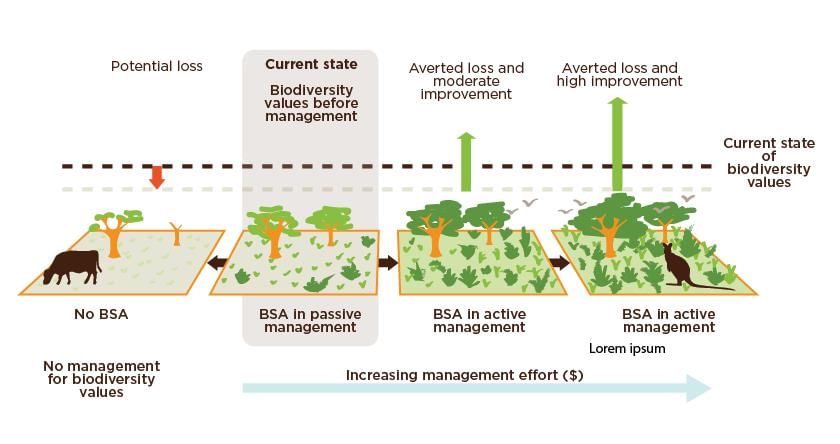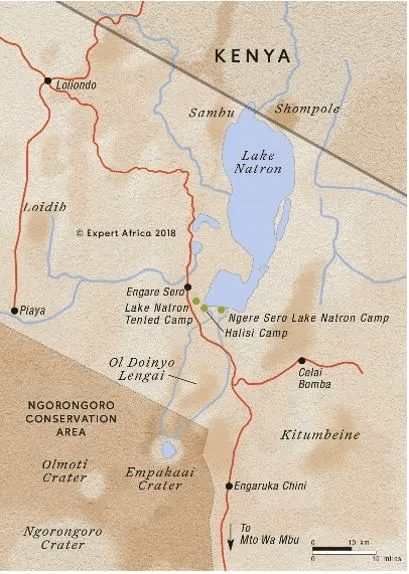Environment and Ecology - 4 | Current Affairs & Hindu Analysis: Daily, Weekly & Monthly - UPSC PDF Download
Biodiversity Credits
 Why in News?
Why in News?
A recent study published in the Proceedings of the Royal Society B has raised important questions about the effectiveness of biodiversity credits, highlighting significant uncertainties that could impact their implementation.
Key Takeaways
- Biodiversity Credits: These are verifiable, quantifiable, and tradeable financial certificates that reward positive biodiversity outcomes, such as the conservation or restoration of species, ecosystems, and natural habitats.
- Market Growth: The current market value of biodiversity credits is estimated at $8 million, with projections suggesting it could grow to $2 billion by 2030 and reach $69 billion by 2050.
Additional Details
- Definition: Biodiversity Credits (often referred to as Biocredits) are gaining traction as a financial mechanism aimed at financing biodiversity conservation efforts aligned with the Kunming-Montreal Global Biodiversity Framework (KMGBF).
- Key Features: Each credit represents a specific area of land or marine habitat that has been conserved or restored over a defined timeframe, with credits generated by various entities, including non-profits, governments, and private companies.
- Examples of Biodiversity Credit Schemes: Notable schemes include Terrasos, GreenCollar, ValueNature, CreditNature, and Wilderlands.
The Biodiversity Credit Alliance (BCA) has been established to support the implementation of biodiversity credit markets, focusing on targets set forth under the KMGBF. Its mission includes developing science-based principles for guiding conservation efforts while engaging various stakeholders, including Indigenous Peoples and Local Communities.
Q1: What is the Green Credit Programme (GCP)?
The Green Credit Programme (GCP) is an initiative designed to promote environmental sustainability by providing incentives for eco-friendly actions through tradable credits. This program encourages industries, organizations, and individuals to adopt practices that support conservation, restoration, and sustainable resource management.

Overview of Cephalopods
Why in News?
Cephalopods, a fascinating group that includes cuttlefish, squid, and octopus, are garnering attention due to their remarkable cognitive abilities, which have sparked discussions regarding their treatment and conservation.
Key Takeaways
- Cephalopods belong to the most morphologically and behaviorally complex class in the phylum Mollusca.
- They exhibit unique characteristics such as a merged head and foot, with arms and tentacles surrounding the head.
- These creatures primarily use jet propulsion for locomotion and are carnivorous in nature.
- Cephalopods possess advanced nervous systems and sensory organs, enabling complex behaviors like visual camouflage.
Additional Details
- Locomotion: Cephalopods primarily move through jet propulsion, allowing for rapid movement in water.
- Diet: They are predominantly carnivorous, with some species being skilled hunters while others feed on floating debris.
- Visual Camouflage: Many cephalopods can change color and patterns using specialized pigment-rich cells, aiding in communication and predation.
- Species like the Australian giant cuttlefish (Sepia apama) utilize chromatophores for signaling to potential mates and deterring predators.
- Cephalopods can exhibit advanced learning abilities, including reversal learning, demonstrating flexibility in behavior based on environmental stimuli.
Cephalopods are not only biologically intriguing but also play a vital role in marine ecosystems. Understanding their behaviors and characteristics can help foster better conservation efforts and enhance our appreciation for these remarkable creatures.

India State of Forest Report 2023
 Why in News?
Why in News?
Recently, the Minister for Environment, Forest and Climate Change released the ‘India State of Forest Report 2023 (ISFR 2023)’ at the Forest Research Institute in Dehradun. This report plays a crucial role in assessing and understanding the status of forest resources across the country.
Key Takeaways
- The report is published by the Forest Survey of India (FSI) on a biennial basis since 1987.
- It includes comprehensive assessments of forest and tree resources using Remote Sensing satellite data and the National Forest Inventory (NFI).
- ISFR 2023 marks the 18th report in the series, providing insights into forest cover, tree cover, mangrove cover, growing stock, and carbon stock in India.
- India's forest and tree cover is now 25.17% of the total geographical area, with a notable increase since the 2021 assessment.
Additional Details
- Top States by Forest Increase:The states with the highest increase in forest and tree cover are:
- Chhattisgarh
- Uttar Pradesh
- Odisha
- Rajasthan
- The states with the largest overall forest cover are:
- Madhya Pradesh
- Arunachal Pradesh
- Maharashtra
- In terms of percentage of forest cover, Lakshadweep leads with 91.33%, followed by the Andaman & Nicobar Islands.
- The report indicates that 19 states/UTs have over 33% of their geographical area covered by forests, with eight states exceeding 75% forest cover.
- The total mangrove cover in India is now 4,992 sq km, showing a positive trend compared to previous assessments.
- Carbon Stock: India's carbon stock has reached 30.43 billion tonnes of CO2 equivalent, contributing significantly to the global carbon sink.
In conclusion, the India State of Forest Report 2023 provides vital statistics and insights that reflect the ongoing efforts towards forest conservation and management in India. The data emphasizes the importance of maintaining and enhancing forest cover to meet environmental goals and combat climate change.
Protecting Sacred Groves
 Why in News?
Why in News?
Recently, the Supreme Court directed the Union government to formulate a comprehensive policy aimed at protecting sacred groves throughout the country. This directive is inspired by the innovative Piplantri Model, which originated in the village of Piplantri, located in Rajasthan's Rajsamand district.
Key Takeaways
- Sacred groves are areas of virgin forests preserved by local communities due to cultural and religious beliefs.
- India is home to over 1 million sacred forests, with approximately 100,000 to 150,000 designated sacred groves.
- Notable regions for sacred groves include Maharashtra, Karnataka, Kerala, Tamil Nadu, and Uttarakhand.
Additional Details
- Sacred Groves: These are tracts of untouched forests that local inhabitants protect because of their spiritual significance. They represent relic vegetation of once dominant flora.
- Statutory Provision: The Wild Life (Protection) Act of 1972 allows state governments to declare private or community land as community reserves, which can include sacred groves.
- The National Forest Policy of 1988, supported by the Godavarman Case of 1996, encourages communities to safeguard and enhance these vital forest patches critical for their livelihood.
- Cultural Significance: Sacred groves play a pivotal role in Hindu beliefs, promoting a sense of coexistence and reverence for nature.
- Role in Conservation: Practices such as tree worship and restrictions on logging and hunting help maintain biodiversity and support diverse ecosystems.
- Sacred groves serve as refuges for a variety of flora and fauna while ensuring clean water ecosystems.
- These areas exemplify Other Effective Area-Based Conservation Measures (OECMs).
In summary, the protection of sacred groves is essential not only for cultural preservation but also for biodiversity conservation, underscoring the need for effective policies and community involvement in safeguarding these vital ecological treasures.
Pink Flamingo
- Flamingos are part of the family Phoenicopteridae.
- They are nomadic birds, meaning they do not have permanent homes.
- Flamingos are social creatures and are often found in flocks that can range from a few pairs to tens of thousands.
- The pink color of flamingos comes from carotenoids, which are red-orange pigments found in the food they eat. When flamingos consume foods rich in carotenoids, the pigment is transferred to their bodies and broken down, giving them their pink hue.

Lake Natron and Its Ecosystem
Lake Natron, located in northern Tanzania within Africa's Great Rift Valley, is famous for its millions of pink flamingos that inhabit its alkaline waters. However, this stunning natural spectacle is under serious threat from human activities and climate change, putting the world's largest migratory bird colony at risk.
The ecosystem of Lake Natron and its surrounding lakes, such as Lake Bogoria in Kenya, is harsh for most forms of life due to the extremely high temperatures and the unique chemical composition of the water, which is characterized by caustic soda and hypersaline conditions.
NGT Imposes Rs 1,000 Crore Fine on Punjab for Waste Management Failures

The National Green Tribunal (NGT) has slapped a hefty fine of Rs 1,000 crore on the Punjab government due to its ongoing inability to manage solid and liquid waste, despite receiving several warnings. The Punjab government is required to deposit this penalty with the Central Pollution Control Board (CPCB) within a month.
Reasons for NGT Penalty
Failure to Manage Waste
- Penalty Basis: The fine was imposed for inadequate management of solid and liquid waste, including 5.387 million tonnes of legacy waste and untreated sewage.
- Regulations Violated: Non-compliance with Solid Waste Management Rules, 2016, and Section 15 of the Environment (Protection) Act, 1986.
Repeated Non-Compliance
- Previous Orders: The Punjab government had failed to adhere to previous NGT orders from 2022, which included creating a ring-fenced account for Rs 2,080 crore under Section 26 of the NGT Act, 2010.
- Show Cause Notices: Issued to the Chief Secretary and Additional Chief Secretary (Urban Development) of Punjab for explanations.
Solid Waste Management Rules, 2016
Overview: These rules replaced the Municipal Solid Wastes (Management and Handling) Rules, 2000.
- Key Features:
- Waste Segregation: Waste generators are required to segregate waste into wet (biodegradable), dry (plastic, paper, metal), and domestic hazardous wastes.
- Responsibilities: Manufacturers must manage sanitary and packaging waste. Users must pay fees for waste collection and processing.
- Penalties: User fees and spot fines for littering and non-segregation.
What is the National Green Tribunal (NGT)?
About:
- Establishment: Created in 2010 under the National Green Tribunal Act, 2010.
- Focus: Environmental protection, conservation of forests, and natural resource preservation.
- Structure: Headed by a Chairperson appointed by the Central government in consultation with the Chief Justice of India (CJI), with 10-20 judicial and expert members.
Jurisdiction:
- Original and Appellate: Addresses cases related to environmental rights, compensation for damages, and enforcement of environmental laws.
- Laws: Includes the Water Act, Forest Act, Air Act, Environment Act, and more.
Powers:
- Orders: Can provide relief, compensation, and restitution for environmental damage.
- Penalties: Imprisonment up to three years, fines up to ten crore rupees, or both.
- Appeal: Orders can be appealed to the Supreme Court within ninety days.
Major Administrative Challenges in Solid Waste Management
Inadequate Implementation of Regulations:
- Infrastructure Issues: Outdated or insufficient garbage bins and failure to enforce waste segregation.
- Regulation Violation: Mixing of unprocessed waste in landfills, contrary to Solid Waste Management Rules, 2016.
Poor Interdepartmental Coordination:
- Coordination Problems: Inefficiencies due to lack of coordination among departments like urban development, environment, and public health.
Resource Allocation and Infrastructure Deficiencies:
- Financial Constraints: Insufficient funds for waste management infrastructure, including processing facilities and waste-to-energy plants.
Challenges with Waste Disposal Sites:
- Land Scarcity: Limited space for waste processing, leading to untreated waste and illegal dumping practices.
Way Forward
Enhanced Waste Processing:
- Future Planning: Municipalities should improve waste processing capabilities with a focus on composting and biogas for biodegradable waste.
- Decentralized Model: Implementing decentralized waste processing, especially in urban areas, by collaborating with neighboring states.
Integrated Waste Management:
- Comprehensive Approach: Combining decentralized processing with large-scale facilities to manage all waste streams effectively.
Conclusion
The penalty imposed by the NGT on Punjab highlights significant shortcomings in waste management practices within the state. Addressing these issues requires robust implementation of regulations, improved interdepartmental coordination, and enhanced infrastructure. Embracing a comprehensive and decentralized approach to waste management can address these challenges, contributing to a more sustainable and efficient waste management system in India.
India's Biodiversity Targets under the CBD
Why is this important? India plans to submit its National Biodiversity Targets to the United Nations Convention on Biological Diversity (CBD) in line with the Kunming-Montreal Global Biodiversity Framework (KMGBF). Article 6 of the CBD encourages all parties to create national strategies for biodiversity conservation and sustainable use. India is expected to present its 23 biodiversity targets at the upcoming 16th Conference of the Parties to the CBD in Cali, Colombia.
What are India's Biodiversity Targets?
- Conservation Areas: Aim to effectively conserve 30% of areas to boost biodiversity.
- Invasive Species Management: Target a 50% reduction in the introduction and establishment of invasive alien species.
- Rights and Participation: Ensure the involvement and rights of indigenous peoples, local communities, women, and youth in biodiversity conservation efforts.
- Sustainable Consumption: Promote sustainable consumption choices and aim to reduce food waste by half.
- Benefit Sharing: Encourage fair and equitable sharing of benefits from genetic resources, digital sequence information, and associated traditional knowledge.
- Pollution Reduction: Commit to reducing pollution, halving nutrient loss, and pesticide risk.
- Biodiversity Planning: Ensure that all areas are managed to minimize the loss of regions with high biodiversity importance.
What is the Kunming-Montreal Global Biodiversity Framework (KMGBF)?
- About: The KMGBF is a multilateral treaty aimed at halting and reversing global biodiversity loss by 2030. It was adopted in December 2022 during the 15th meeting of the Conference of the Parties (CoP) to the CBD. The framework supports the Sustainable Development Goals (SDGs) and builds upon the previous Strategic Plan for Biodiversity 2011–2020.
- Purpose and Goals: The KMGBF aims to ensure that by 2030, at least 30% of degraded terrestrial, inland water, marine, and coastal ecosystems are under effective restoration. It includes 23 action-oriented global targets for urgent action over the decade to 2030, facilitating progress toward outcome-oriented goals for 2050. It's important to note that the 30% target refers to collective global efforts rather than individual country requirements.
- Long-Term Vision: The framework envisions a future where, by 2050, there is a collective commitment to living in harmony with nature, guiding current actions and policies on biodiversity conservation and sustainable use.
Development of National Biodiversity Targets (NBTs)
- Aichi Biodiversity Targets: India has developed 12 national biodiversity targets that align with the previous Aichi Biodiversity Targets in response to CBD obligations.
- National Biodiversity Action Plan (NBAP): Originally created in 2008 and updated in 2014, the NBAP incorporates Aichi Biodiversity Targets.
- Monitoring: India has developed associated indicators and a monitoring framework to provide a roadmap for achieving the NBTs.
How Can India Achieve the New Biodiversity Goals?
- Habitat Connectivity: Prioritize the conservation of neglected ecosystems like grasslands, wetlands, and seagrass meadows. Ensure well-connected protected areas integrated into broader landscapes and seascapes to facilitate species movement and promote biodiversity.
- Mobilising Financial Resources: Advocate for financial support from developed nations to implement national biodiversity action plans effectively. The GBF calls for developed countries to mobilize at least USD 20 billion annually by 2025 and USD 30 billion by 2030 for biodiversity initiatives in developing countries.
- Co-Management Models: Develop co-management frameworks involving indigenous peoples and local communities in the conservation process to enhance the effectiveness of protected areas while maintaining community livelihoods.
- Integrating OECMs: Shift focus from traditional protected areas to Other Effective Area-based Conservation Measures (OECMs) to conserve biodiversity in areas with fewer restrictions on human activity. Support traditional agricultural systems and privately owned lands that contribute to conservation goals.
- Reforming Agricultural Subsidies: Redirect support from harmful practices like pesticide use to sustainable alternatives that promote ecosystem health.
- Alignment with Previous Targets: Build on the existing National Biodiversity Action Plan (NBAP) and align it with the new 23 targets of the GBF to create a cohesive strategy for biodiversity conservation in India.
Conclusion
India's commitment to the Kunming-Montreal Global Biodiversity Framework through its 23 biodiversity targets reflects a strategic approach to conserving ecosystems and enhancing community participation. By prioritizing neglected habitats, mobilizing resources, and reforming subsidies, India can effectively work towards achieving its biodiversity goals by 2030.
Bioplastics
- Bio-based plastics are made from biomass such as corn, sugarcane, vegetable oil, or wood pulp.
- Biodegradable plastics can be broken down by micro-organisms into natural substances like water, carbon dioxide, and compost.
- Bioplastics are renewable and biodegradable, helping to reduce plastic waste and environmental contamination.
- Bioplastics are being promoted as an alternative to traditional plastics, using natural polymers from agricultural waste, cellulose, or starch from potatoes and corn.
Types of Bioplastics
- Bioplastics can be made from various materials such as starch, sugar, and cellulose.
- Cellulose-based plastics are derived from wood pulp and used for making films and wrappers.
- Thermoplastics, which are starch-based, are used for drug capsules due to starch's moisture-absorbing properties.
- Polylactic Acid (PLA) is produced from fermented starch and used for computer and mobile phone casings, cups, bottles, and other packaging.
- Polyhydroxybutyrate (PHB) is used for making banknotes and car parts.
- Polyamide 11 (PA 11), made from vegetable oils, is used for flexible pipes in the oil and gas industry and electrical anti-termite cable sheathing.
- Photo-degradable plastics degrade when exposed to light.
Positive Impact of Bioplastics
- Environmentally Friendly: Bioplastics consume less fossil fuel, emit fewer greenhouse gases, and are more energy-efficient compared to petrochemical plastics.
- Easy Recycling: Biodegradable plastics are easier to recycle and are non-toxic, contributing to reduced carbon footprints.
- Renewable Resources: Their production does not involve non-renewable raw materials and helps reduce non-biodegradable waste.
- Health Safety: Bioplastics do not contain harmful additives like phthalates or bisphenol A, and they do not alter the flavor or smell of food.
- Versatile Applications: They are used in agriculture, textiles, medicine, and especially in containers and packaging, gaining popularity in cities across Europe and the United States for ecological reasons.
Negative Impact of Bioplastics
- Cost and Applicability: Bioplastics are generally more expensive and less applicable than petrochemical plastics.
- Energy Consumption: The production of bioplastics requires about 80% of the energy needed for conventional plastic production.
- Biodegradability Concerns: Tests have shown that not all bioplastics are biodegradable. For instance, a 2009 study found that only 40% of tested bioplastics met biodegradability standards.
- Composting Issues: Compostable plastics take around 40 days to decompose, during which they can be ingested by small animals, potentially causing harm.
- Marine Pollution: Bioplastics claiming biodegradability in water must disintegrate into small pieces within six months, which can lead to marine contamination. If these plastics settle on the sea floor, they may not degrade at all due to lower temperatures.
- Microplastic Damage: Microplastics, resulting from poorly degrading bioplastics, can cause significant harm to marine life.
- Waste Management Challenges: In places like India, where waste segregation is minimal, bioplastics are often disposed of like regular plastics, hindering their treatment and recycling.
- Biodegradability Misconceptions: Not all bioplastics are truly biodegradable, leading to misconceptions about their environmental impact.
Conclusion
Focusing on composting and raising awareness about waste management and environmental protection is more effective than relying on bioplastics.
|
38 videos|5288 docs|1117 tests
|
















